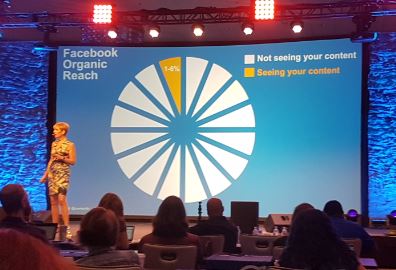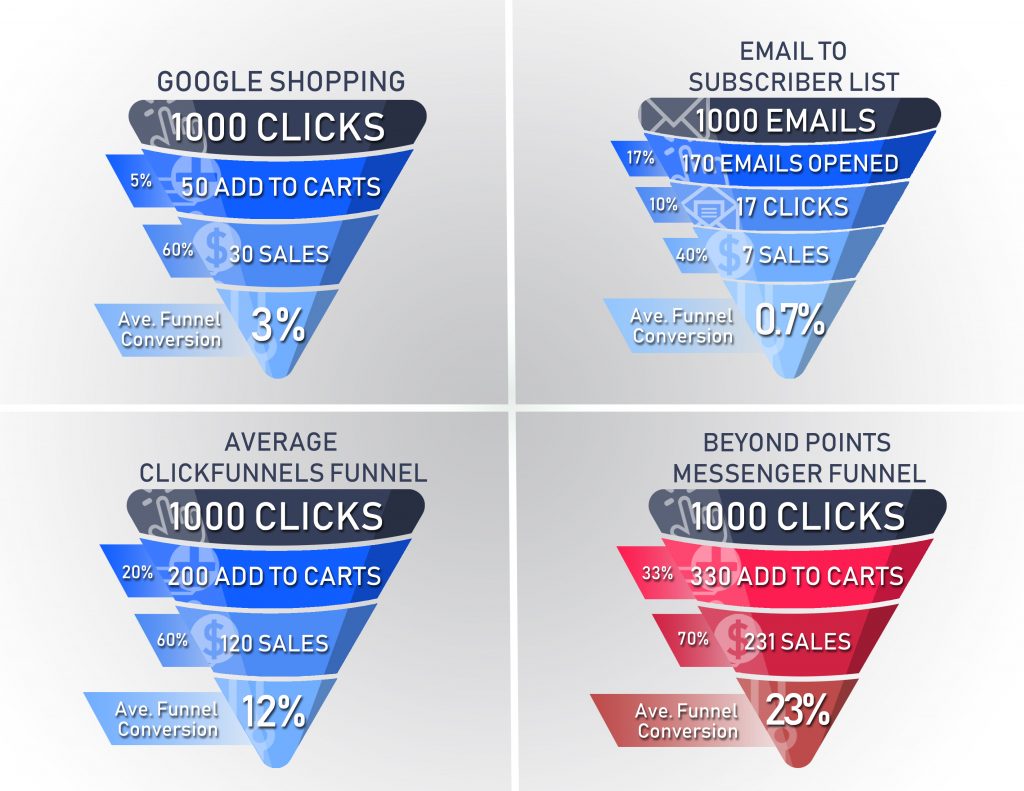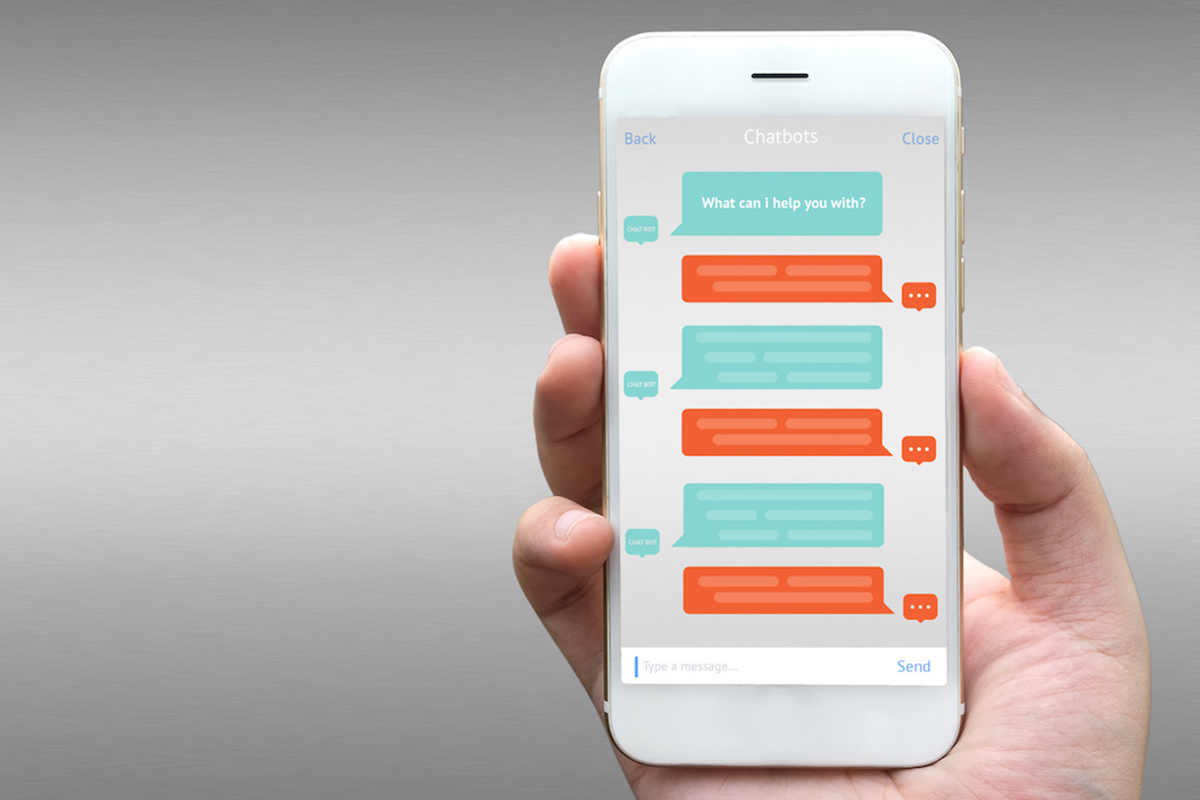As of last year, approximately 81% of people in Australia shopped online. By 2021, this number is projected to reach 22 million people.
The average conversion rate for ecommerce businesses ranges between 1% and 2%, with global figures standing at 2.58% for 2019 Q2.
This means that building an ecommerce business and making it sustainable, won’t be an easy task. Aside from determining what products to sell and how to source them, enticing visitors to your site with paid advertising takes time and dedication.
Marketers are investing in digital campaigns in an attempt to boost revenue, with the digital ad spend projected to reach approximately $8 million this year alone.
That being said, advertising can only encourage them to visit your online store. In an increasingly competitive business environment, digital advertising saturates the ecommerce realm and can only do so much to convince unqualified leads to convert to loyal customers.
In this article, you’ll find seven conversion optimization tactics that can help you reduce your advertising spend and drive new customers through your conversion funnel.
But first, let’s dive into the fundamentals:
Understanding Online Store Conversion Rates
To accurately reflect your ecommerce conversion goals, you need to define the KPIs (Key Performance Indicators) that your business will use to determine your success.
A conversion rate refers to the percentage of website visitors that complete a desired action. Strictly speaking, ecommerce businesses define their conversion rate as the percentage of website visitors who purchase products from their online stores. However, other metrics include:
- A visitor adding products to their cart
- A visitor adding an item to their wish list
- Social media shares
- Email signups
- Any other KPI your brand finds valuable
7 E-Commerce Conversion Optimization Tactics
Here is how you can most of the increasing traffic and increase your conversion rate, without increasing your ad spend.
1. Use High-Quality Images And Video On Your Product Pages
Unlike brick-and-mortar stores, consumers can’t touch or feel products on your ecommerce page. This can discourage purchases – especially if your website displays low-resolution images.
Here, displaying detailed, high-resolution product images and videos can help customers visualize your products better and increase your conversion rates. Pictures, after all, speak a thousand words.
When designing images for your product pages, try to cover the following:
- Give the customer a clear understanding of what it is, and exactly what they will get (functional images)
- Help the customer understand how to use it (explainer images).
- Help the customer imaging themselves using it (lifestyle images).
To see a fantastic example of all three – check out babybeeprams.com.au
2. Tweak And Test Your Ecommerce Checkout Process
If your checkout process is too long or too complicated, you risk losing a large portion of potential purchases and website traffic to confusion.
Here, you must test your website checkout process using A/B tests to tweak the process based on your customers’ preferences. With over 60% of companies stating that A/B testing is crucial for conversion rate optimization (CRO) – if you’re still thinking about it, you are already lagging behind.
For starters, you can limit what can be typed into specific fields to make it easier for customers to complete the process.
This way, when a consumer fills in their credit card details, they are already aware of the format they need to fill it in. This helps make it easier to read and harder to mess up.
To optimize it further, digital wallets like PayPal Express, Apple Pay, and Amazon Pay allow buyers to sign in with their account information and pre-populates their credentials for them.
Not only do these optimizations help to make checkout faster, but it also helps to reduce the risk of errors when processing payments.
3. Personalisation
PwC’s annual Global Entertainment and Media Outlook highlights how the online consumer experience is becoming progressively personal as brands customize their offerings to focus on personal preferences and purchasing patterns.
If your store has an extensive suite of items for sale, you might find that wish lists, custom preferences, and tailored recommendations for consumer goods such as clothing can help customers sift through the plethora of options available to help and shorten their decision-making.
90% of leading marketers even go as far as to say that personalisation contributes to their profitability and helps to shorten the path to purchase.
The good news is that marketers today can leverage ample consumer data and personalise their conversion funnels to align with prospects’ location, buying behavior, and preferences. Here, a personalisation engine is key to ensure you can achieve this at scale – and thus develop a deep understanding of your customers’ needs and wants. If you’re not at a scale where a personalization engine makes sense, try out Messenger funnels which will allow you to take a personal approach with a big tech budget.
The bottom line? People love personalised experiences and will appreciate your brand taking the time out to cater to their preferences.
4. Hidden Costs
One of the single biggest causes of checkout abandonment is unexpected fees and costs appearing at the payment stage. Most notably, shipping fees.
In our experience, having to pay for shipping is one of the biggest bugbears for consumers (together with delivery time). If possible, consider including the cost of shipping in your product prices. If that isn’t possible, then we recommend setting a FREE shipping level around about your average order value, and making shipping options and costs transparent as early as possible.
You can also try techniques like exit intent popups on the cart that offer free shipping in exchange for purchase today.
5. Provide Valuable Content
Advertising can only go so far to build intrigue around your products and services – and get people to check your offerings on your website. Therefore, the more value you can provide your consumers on your website, the more likely they are to complete purchases.
Not only does this include product copy, but it also refers to the use of blog content to build authority within your niche, inform consumers on your products, and engage your target audience.
If you use a merchant-provided copy for your product descriptions, consider making a shift to a more personalised copy that connects with your buyers, and sells the product instead of simply describing what it is.
Educational content – that offers consumers the quickest solution to their problem – will ultimately also help to increase your website’s organic SEO traffic. Start with your home page and product pages with the following focus:
- Prioritize on the benefits of products instead of their features
- Leverage selling points in customer reviews to back claims
- Emphasize UVPS (unique value propositions) of your brand
- Make the returns and refund policy transparent from the get-go
The effective product copy can help customers visualize the benefit of buying your product and the value it will add to their lives.
6. Provide Product Testimonials If Applicable
According to BigCommerce, 92% of customers make it a point to read online reviews before they make a purchase.
Familiar with the phrase, ‘Facts Tell, Stories Sell’? It was coined by Anthony Hill to describe how narrative merchants used to connect with consumers through stories they can relate to. Product testimonials go beyond just listing down the benefits of a certain product. Testimonials (be sure to use real ones!) can do wonders to build credibility and trust with consumers.
Consequently, 92% of online consumers read reviews and testimonials for a business before making a purchase. Similarly, 88% of consumers trust online endorsements as much as personal recommendations.
So if you want to prove the genuineness of your platform, entice your current and past buyers to leave you with reviews for your business, products and services.
7. Show Security Badges
One of the biggest fears consumers face when shopping online is releasing their credit card credentials when checking out – and for a good reason! Only recently, KrebsonSecurity learned of the sale of four million stolen credit cards tied to security breaches at restaurant chains.
When online shoppers view security badges in open display, it reassures them that their credit card details are secure and confidential. It also helps to reduce cart abandonment and improve your eCommerce conversions – because they guarantee to keep online transactions safe.
Here are some other ways you can make your e-commerce platform safer for customers:
- Install SSL (Secure Sockets Layer) at checkout and across your website
- Display small images of credit card logos such as PayPal, Visa, and MasterCard to reassure customers that you use customer-trusted payment solutions. As of now, 47% of online shoppers in Australia use credit cards to buy products online.
- Ensure you have an active account with companies providing your security badges. Avoid adding the images if you aren’t secure
Key Takeaway
Last year Auspost forecast that by 2021, 12% of consumer spending would be conducted online. However, online ecommerce in Australia saw this take effect in March 2020 – and it’s only expected to go up from there.
The key takeaway here is that the conversion game doesn’t necessarily end after a successful campaign. In fact, it doesn’t end when you cement your reputation in the ecommerce realm, either.
It is an ongoing process, with small tweaks in your e-commerce platform not only boosting your bottom line but also helping you optimize your back-end conversion rate. Given that you now have a baseline average conversion rate for your e-commerce site, you can better allocate your advertising spend to entice new sales.
As your eCommerce Growth Partners, we recognize that optimizing store conversion rate is a critical enabler for scaling your business. Having battle tested just about every conversion rate tactic there is, we’ve developed a comprehensive 135-point conversion assessment and a unique proprietary template for Shopify that routinely puts our customers in the top 0.5% of all online stores by conversion rate.
If conversion rate is an issue for your store, contact us today about our audit and site elevation services, and together let’s get your store putting more dollars back in your pocket!




 3. Blog to Messenger.
3. Blog to Messenger.
 You know who you are!
You know who you are!

